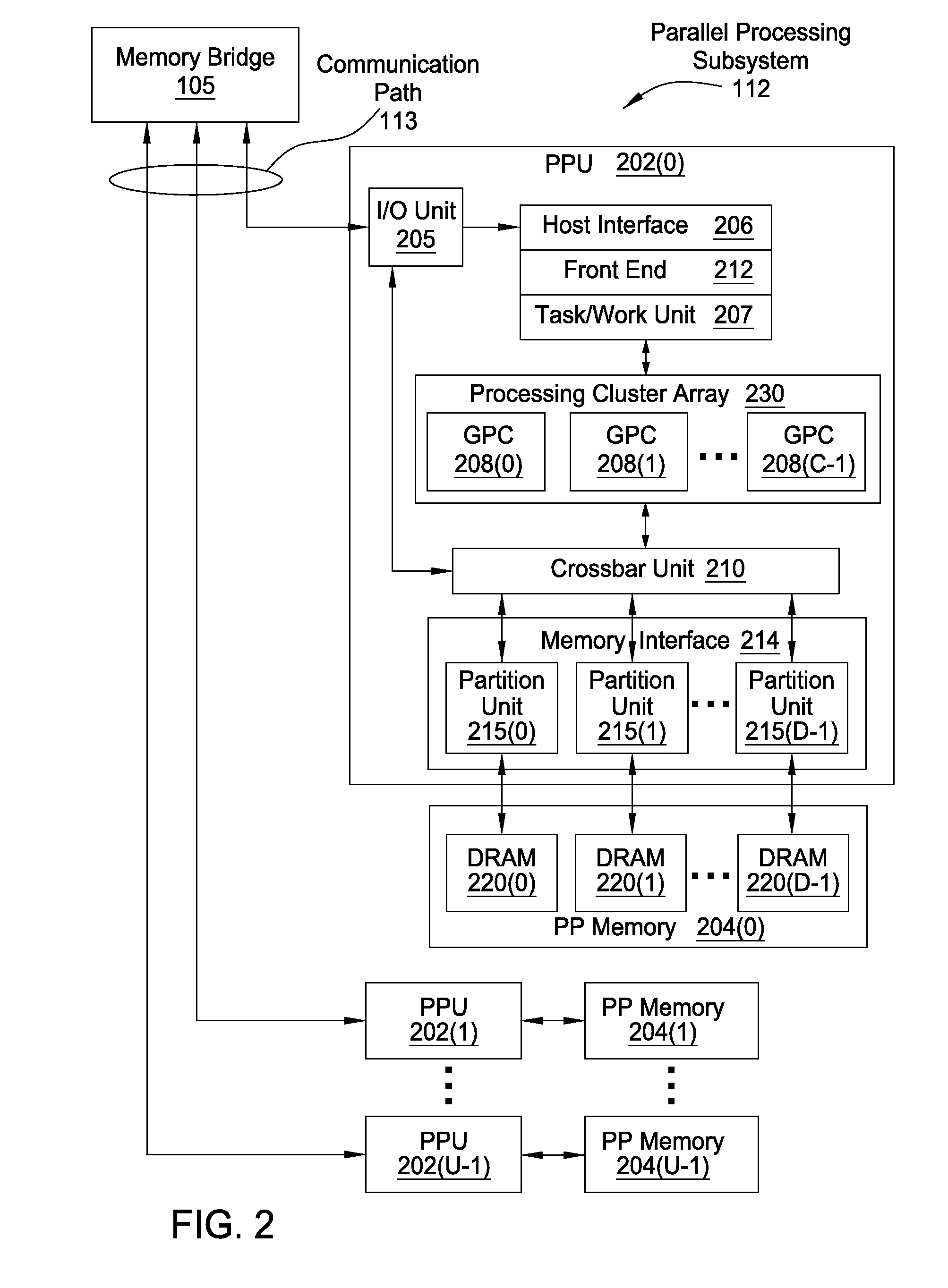Technique for grouping instructions into independent strands
a technology of independent strands and instructions, applied in the field of multi-threaded programming, can solve the problems of inability to efficiently utilize limited hardware resources, inability to perform useful work of hardware resources, etc., and achieve the effects of reducing idle cycles, increasing processing throughput of that processing core, and increasing the energy efficiency of the processing cor
- Summary
- Abstract
- Description
- Claims
- Application Information
AI Technical Summary
Benefits of technology
Problems solved by technology
Method used
Image
Examples
Embodiment Construction
[0018]In the following description, numerous specific details are set forth to provide a more thorough understanding of the present invention. However, it will be apparent to one of skill in the art that the present invention may be practiced without one or more of these specific details.
System Overview
[0019]FIG. 1 is a block diagram illustrating a computer system 100 configured to implement one or more aspects of the present invention. Computer system 100 includes a central processing unit (CPU) 102 and a system memory 104 communicating via an interconnection path that may include a memory bridge 105. System memory 104 includes an image of an operating system 130, a driver 103, and a co-processor enabled application 134. Operating system 130 provides detailed instructions for managing and coordinating the operation of computer system 100. Driver 103 provides detailed instructions for managing and coordinating operation of parallel processing subsystem 112 and one or more parallel p...
PUM
 Login to View More
Login to View More Abstract
Description
Claims
Application Information
 Login to View More
Login to View More - R&D
- Intellectual Property
- Life Sciences
- Materials
- Tech Scout
- Unparalleled Data Quality
- Higher Quality Content
- 60% Fewer Hallucinations
Browse by: Latest US Patents, China's latest patents, Technical Efficacy Thesaurus, Application Domain, Technology Topic, Popular Technical Reports.
© 2025 PatSnap. All rights reserved.Legal|Privacy policy|Modern Slavery Act Transparency Statement|Sitemap|About US| Contact US: help@patsnap.com



